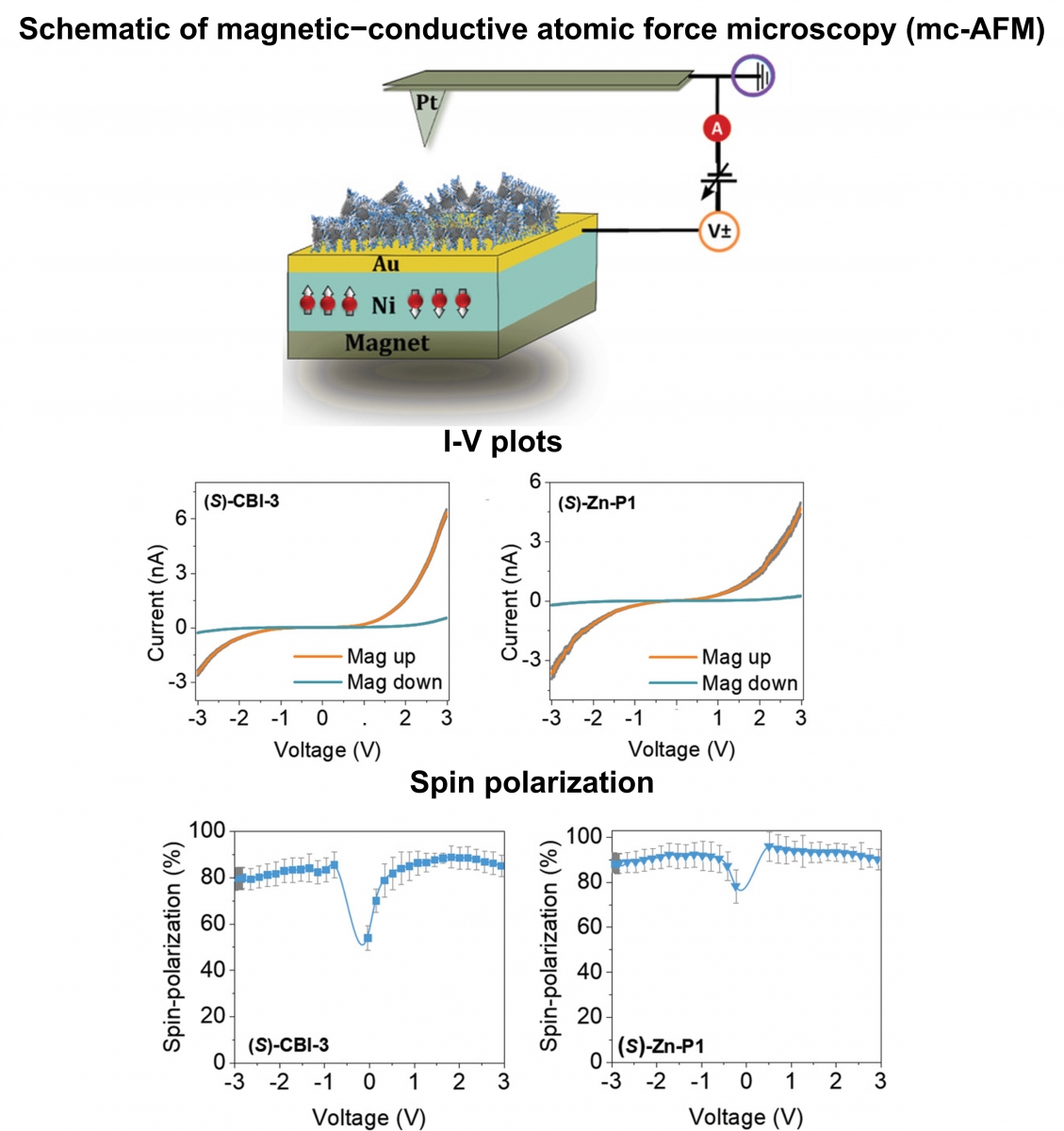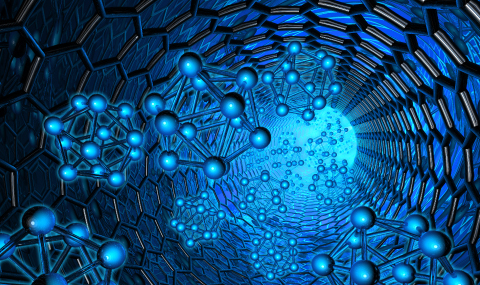When an electron is transmitted through chiral molecules, one spin is preferred over the other. The preferred spin depends on the handedness of the molecule; namely, for one enantiomer the preferred spin polarization is parallel to the electron momentum, whereas for the opposite enantiomer it is directed antiparallel to the electron momentum. This effect is known as chiral‐induced spin selectivity (CISS) effect. Hence, according to CISS, the chiral organic molecules can serve as spin filter. We study the spin‐polarization properties of various chiral molecules using magnetic-conductive atomic force microscopy (mc-AFM) at room temperature. The mc‐AFM measurements probe the spin selectivity of nano-scopic structures including the effect of the interface between the chiral materials and the ferromagnet used for analyzing the spin. The extent of spin polarization from mc‐AFM studies is expressed as the ratio of currents with two different configurations of the magnet (up and down) at a particular voltage [(Iup/Idown)V] or as percentage of spin polarization {[(Iup − Idown)/(Iup + Idown)] × 100}. It is important to appreciate that the dependence of the current on the voltage applied is in the nonlinear regime and hence mc‐AFM is sensitive to the spin selectivity of the conduction.
Recently, we observed 85–90% spin polarization with supramolecular system assembled from mixtures of chiral and achiral molecules, 3,5‐dialkoxyphenyl derivatives of coronene bisimide and porphyrin ((S)‐CBI‐3 and (S)‐Zn‐P1) at room temperature. The measurement was carried out across the cross‐section of the nanofiber (10–20 nm height).

- C. Kulkarni, A. K. Mondal, T. Das, G. Grinbom, F. Tassinari, M. Mabesoone, E.W. Meijer, R. Naaman, Adv. Mater. 2020, 32, 1904965.
- S. Mishra, A. K. Mondal, E. Smolinsky, R. Naaman, K. Maeda,T. Nishimura, T. Taniguchi, T. Yoshida, K. Takayama, E. Yashima, Angew. Chem. 2020, 132, 14779 – 14784.
- A. K. Mondal, N. Brown, S. Mishra, P. Makam, D. Wing, S. Gilead, Y. Wiesenfeld, G. Leitus, L. J. W. Shimon, R. Carmieli, D. Ehre, G. Kamieniarz, J. Fransson, O. Hod, L. Kronik, E. Gazit, R. Naaman, ACS Nano 2020, 14, 16624−16633.

